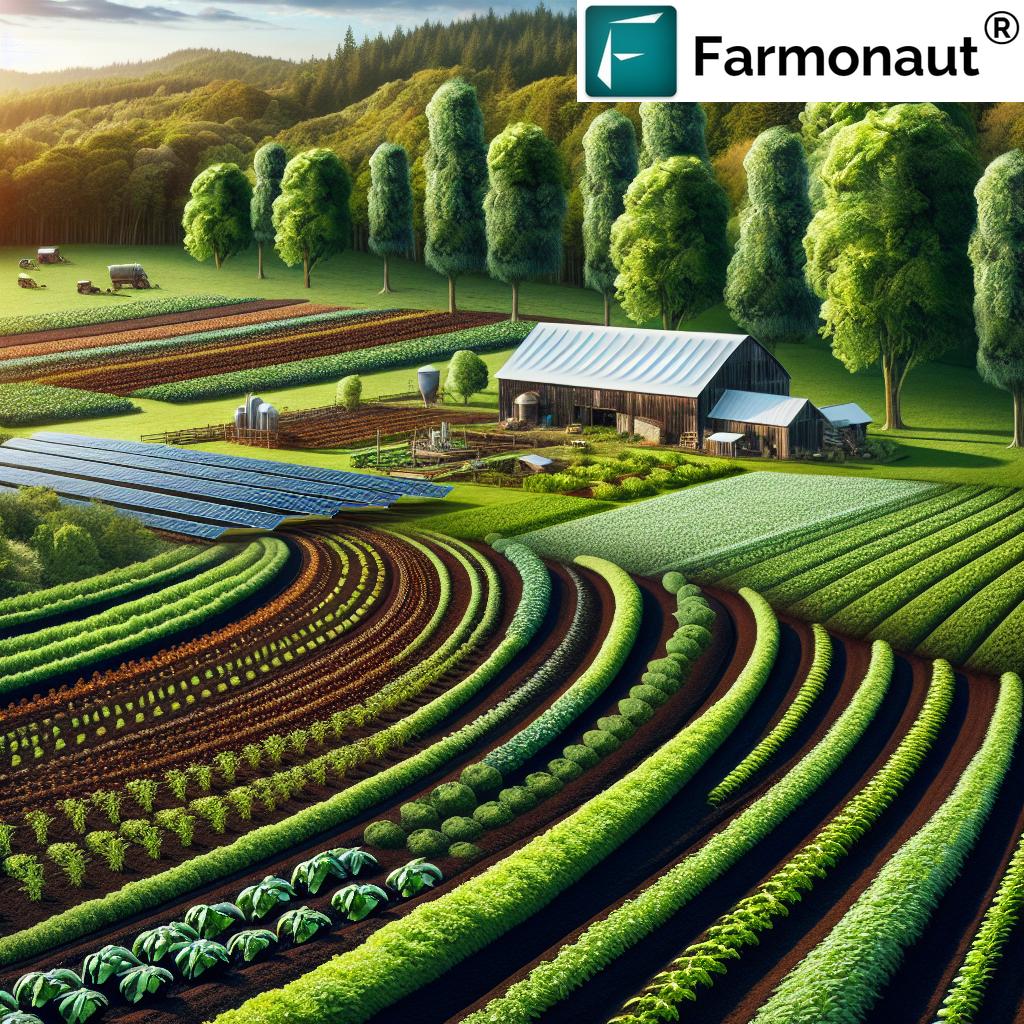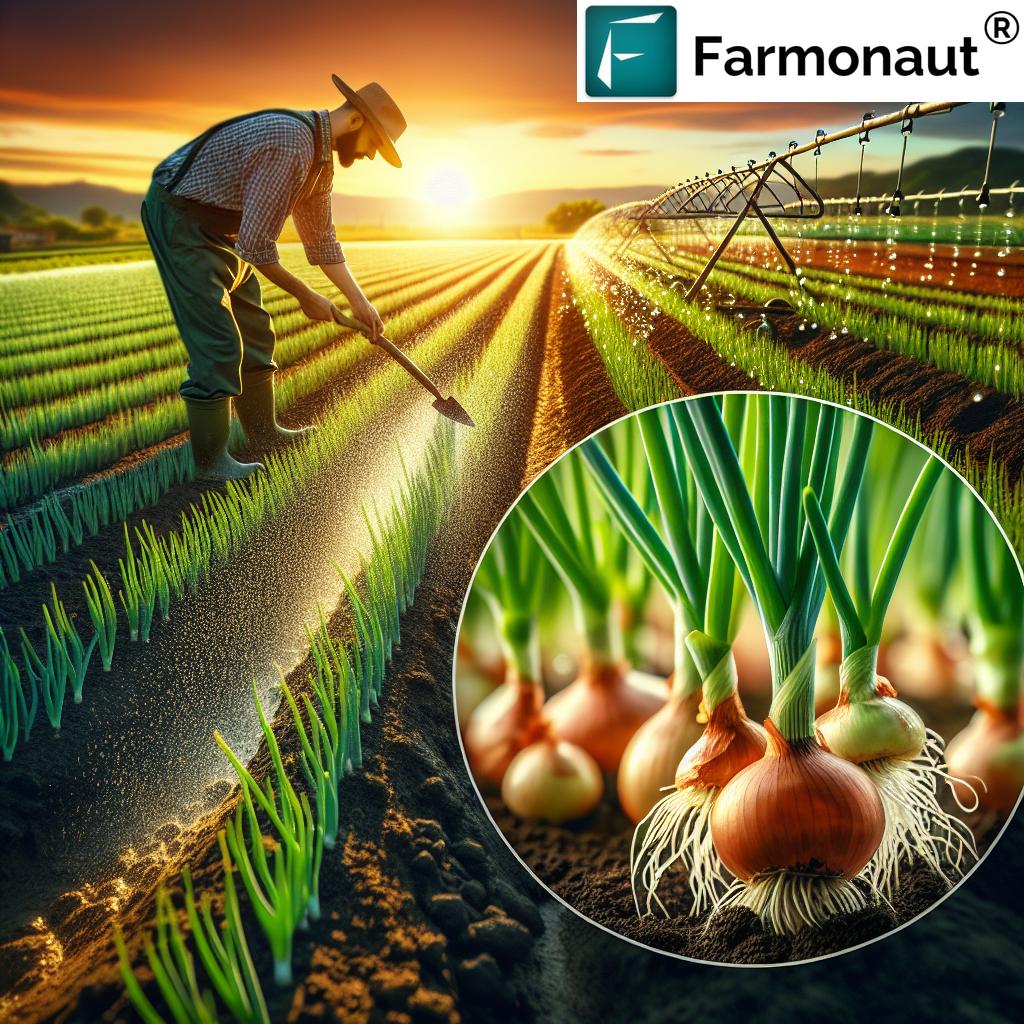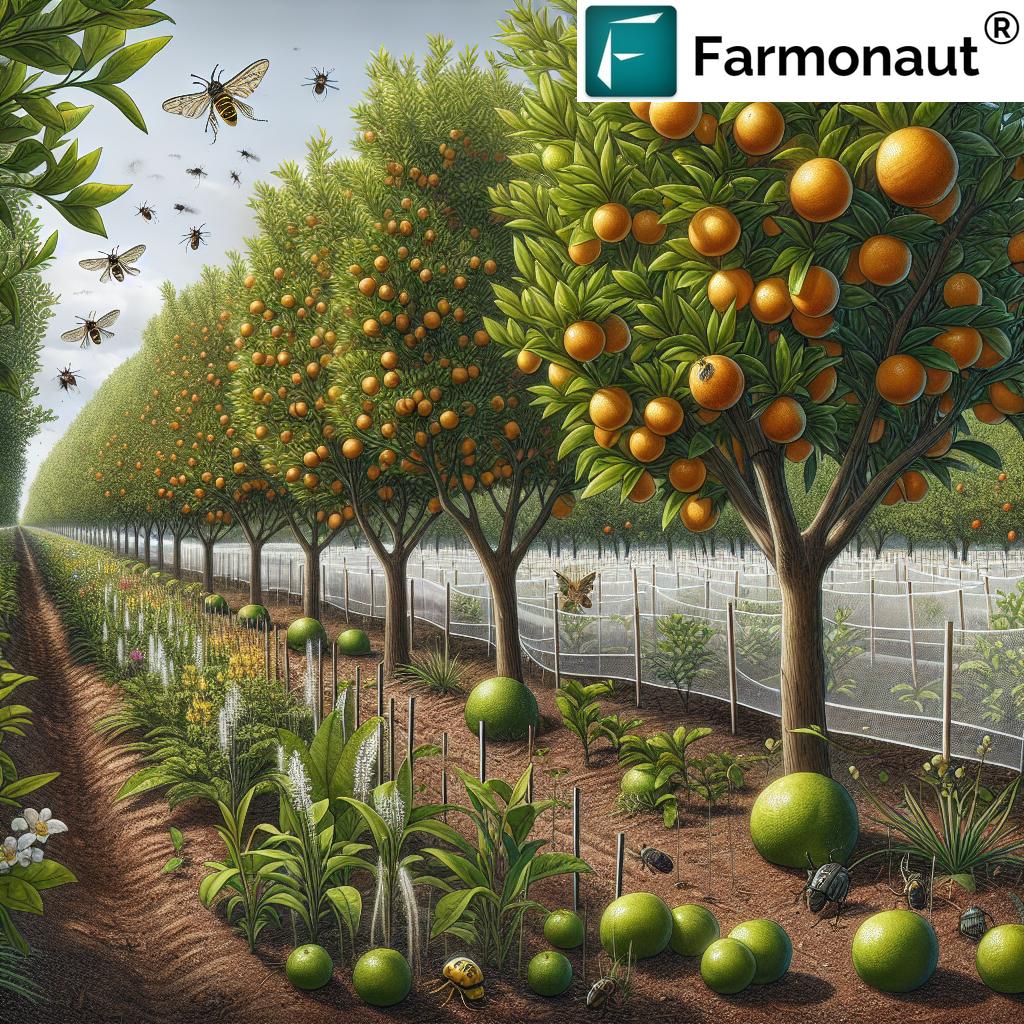Table of Contents
- Introduction
- Evolution of the Combine Harvester Machine
- How the Best Combine Harvester Machine Works
- Critical Role of Combine Harvester in Modern Agriculture
- 2026 Innovations in Combine Harvester Machines
- Automation and Autonomous Harvesting Systems
- Precision Technology, GPS, and Smart Farming Integration
- Combine Harvester Machine: Sustainability and Environmental Impact
- Adaptability and Versatility in Diverse Farming Conditions
- Ease of Use, Maintenance, and User Experience in Modern Harvesters
- Economic Aspects and Cost-Effectiveness of Combine Harvester Machines
- Farmonaut—Enhancing Harvesting through Satellite Technology
- Comparison Table of Top Combine Harvester Machines (2025-2026)
- Future Prospects of the Best Combine Harvester Machine
- FAQs About Best Combine Harvester Machines
- Conclusion
“In 2025, modern combine harvesters can cover up to 20 acres per hour—doubling efficiency compared to traditional models.”
Best Combine Harvester Machine: 2026 Innovations
The combine harvester machine is revolutionizing agriculture in 2025-2026. Discover breakthrough innovations, automation, and the critical role the best combine harvester plays in ensuring efficient, sustainable farming for the future.
In the rapidly evolving world of agriculture, the combine harvester machine stands as an emblem of technology meeting farming needs. This sophisticated tool has revolutionized how farmers approach harvesting—by integrating multiple steps previously done by hand, reducing labor costs, and maximizing productivity. As we delve deeper into 2025 and 2026, advancements are redefining the landscape, making the quest for the best combine harvester machine more important than ever.
This article explores how the latest innovations, automation, and sustainable practices are shaping the future prospects of combine harvester machines—ensuring efficient operations, adapting to a variety of crop types and terrains, and helping farmers tackle both growing populations and unpredictable climate conditions. Whether you manage a large farmland or are seeking scalable solutions, understanding these technological shifts is critical.
Evolution of the Combine Harvester Machine: From Labor-Intensive Past to an Automated Future
The combine harvester machine is a cornerstone of modern agricultural operations. Back in the early days of large-scale farming, harvesting was a strenuous, labor-intensive endeavor. Tasks such as reaping, threshing, and cleaning grain required multiple steps and significant time investment.
The advent of the combine harvester—combining all three essential functions into a single machine—significantly reduced both time and costs. Farmers worldwide have benefited from efficiently harvesting a variety of crops (including wheat, corn, rice, barley, and soybeans), making the harvester machine a versatile, hugely beneficial tool for contemporary agriculture.
- Early combine harvester machines relied heavily on manual controls and basic mechanical systems.
- By the late 20th century, mechanical improvements and diesel engines increased their reliability and range.
- Twenty-first-century models started integrating electronics, sensors, and precision technology to take harvesting to new heights.
Today, in 2025 and looking forward to 2026, the role of the harvester has never been more critical. Driven by mounting demand for sustainable practices amid growing populations and harsh climate conditions, combine harvester innovations stand at the forefront of agricultural progress.
How the Best Combine Harvester Machine Works: Processes, Steps, and Integration
At its core, a combine harvester machine is designed to perform three primary functions in one integrated operation:
- Reap: The machine cuts crops (grains like wheat, rice, corn, barley) at the base.
- Thresh: It separates the grain from the rest of the crop by beating.
- Clean: Residues are separated, and clean grain is collected.
Modern combines go further, with systems that monitor moisture levels, instantly yield data, map fields for optimized routes, and track efficiencies, all while minimizing waste and fuel consumption.
Media: Watch Precision Tech & AI in Harvesters
- Headers and Feeders: Adjustable headers enable combine harvester machines to handle various crop types and terrains, widening their applicability.
- Threshing and Separating Mechanisms: Improved mechanical systems ensure higher grain retention and less waste.
- Grain Tanks & Residue Management: Larger, smarter tanks, and automated residue chopping further boost productivity and sustainability.
Efficiency, to a modern farmer, is everything. These machines, with their advanced integration of steps—especially in the best combine harvester machines—enable more timely harvests and better management of fields.
Critical Role of Combine Harvester in Modern Agriculture
The combine harvester machine is now an indispensable tool for farmers across the globe, serving both smallholders and vast enterprises.
- Feeding a Rising Population: With urbanization and growing populations, the demand for efficient crop harvesting continues to intensify.
- Climate Challenges: Unpredictable weather patterns and shorter harvesting windows make timely operation absolutely critical.
- Sustainability: As sustainable practices become non-negotiable, harvesters play a key role in reducing fuel consumption, waste, and emissions.
- Supporting Diverse Agriculture: Adaptable combines enable farming on varied terrains and crop types, from fertile plains in India to undulating landscapes in Europe.
The evolution toward sophisticated, technology-enabled combines is making these benefits accessible to more farmers globally.
2026 Innovations in Combine Harvester Machine: What Sets the Best Apart?
The coming years are set to bring immense advancements in the combine harvester machine segment. Let’s explore the cutting-edge technology powering the best combine harvesters in 2025 and beyond:
- Advanced AI and Machine Learning: Combines now incorporate real-time monitoring of crop and soil conditions, moisture levels, and yield data, with analytics helping operators make informed decisions.
- Sensor Networks: Sensors track everything—grain quantity and quality, fuel use, losses, and mechanical health.
- Remote Diagnostics & Predictive Maintenance: Systems enable operators to anticipate problems, minimizing downtime and reducing maintenance costs.
- Hybrid & Electric Powertrains: New models utilize electric or hybrid engines, reducing emissions and operational costs, aligning with sustainability practices.
- Autonomous Capabilities: Automation continues to gain momentum, with machines capable of operating 24/7 with minimal human intervention.
It’s the integration of all these innovations that define the best combine harvester machine for 2026 and beyond.
Key Features of Modern Combine Harvester Machines
- GPS and Precision Agriculture Integration: Operators can map fields and optimize routes for minimal waste and optimal fuel consumption.
- Cloud-Connected Data: Facilitates field performance reviews, yield mapping, and historical comparisons.
- Enhanced Safety: Improved sensor networks mean safer, more reliable operation for all harvester machine operators.
- Sustainability Innovations: Residue management systems enable soil health improvement and better resource use.
“By 2026, automation in combine harvester machines could reduce crop harvesting labor costs by nearly 40%.”
Automation and Autonomous Harvesting Systems: The Next Leap in Combine Harvester Machine Evolution
The trend towards automation is increasingly becoming the norm in large-scale operations. Autonomous combine harvester machines enable farmers to work round the clock, providing timely harvests that are crucial for maintaining crop quality and reducing post-harvest losses.
- LIDAR, Camera, and Sensor Fusion: Allow for safe, obstacle-avoiding navigation without operators.
- Collaborative Fleet Operations: Swarms of autonomous combines could one day coordinate in real time, maximizing both coverage and efficiency on fields.
- Remote Supervision: Human intervention is minimal, mostly limited to remote diagnostics and algorithms’ oversight.
- Example: A single technician can monitor and manage several autonomous combines remotely, adjusting settings and responding to alerts as needed.
- AI-Based Fleet Management Software offers recommended routes and timing, further optimizing harvest efficiency.
For farms seeking advanced fleet management software tailored for modern operations and environmental considerations, check out our Fleet Management solutions.
Benefits of Automation in Combine Harvester Machines
- Reduced labor costs, making large-scale harvesting more economically viable.
- Elimination of human error: Algorithms enable replicable, high-quality processes each time.
- Data-driven improvements in yield mapping, soil preservation, and resource use.
- Round-the-clock performance despite adverse weather or operational conditions.
Precision Technology, GPS, and Smart Farming Integration in Combine Harvester Machines
The integration of GPS and precision technology is a hallmark of the best combine harvester machines in 2025 and 2026. Smart systems use GNSS (Global Navigation Satellite Systems), machine learning, and field sensors to enhance productivity and enable informed decisions.
- Precision Mapping: Operators map fields and define optimal routes, minimizing overlap and waste.
- Real-Time Sensor Input: Monitoring of crop height, density, and maturity helps adapt strategies on the fly.
- Yield Monitoring and Analysis: Harvesters track each section of the field, collecting data for subsequent crop management and yield predictions.
To leverage the benefits of precision farming, farmers can deploy large-scale farm management platforms for real-time insights, resource optimization, and remote monitoring.
- API Access: For developers seeking deep data integration, Farmonaut offers a public API and comprehensive API documentation.
-
Mobile and App Access:



Smart Technology Features Enhance Combine Performance
- Connectivity for remote advisory systems—enabling AI-driven recommendations through apps or dashboards.
- Blockchain-based traceability (know more) helps assure authenticity across supply chains, especially useful for high-value organic or specialty crops.
Combine Harvester Machine: Sustainability and Environmental Impact in 2026
Sustainability is at the heart of combine harvester machine innovations for 2025 and 2026. Environmental pressures and strict regulations mean farmers and manufacturers are prioritizing fuel-efficient engines, emission control, and resource conservation.
-
Fuel-Efficient Engines:
Innovations in engine technology aim to further reduce fuel consumption (many new models have hybrid or electric options), lowering the carbon footprint of each operation. -
Residue Management:
Combine harvester machines integrate systems to chop and redistribute crop residues, which enhances soil health and decreases reliance on artificial fertilizers. -
Reduced Soil Compaction:
Smarter tire design and distributed weight mean less soil structure damage during harvest. -
Environmental Impact Data:
Farmers can utilize carbon impact analytics, such as from carbon footprinting tools, for compliance and better farm management.
Using satellite technology and AI to continuously monitor soil and vegetation health, as provided in Farmonaut’s platforms, is becoming a global standard for sustainable resource management.
Adaptability and Versatility in Diverse Farming Conditions
One of the most remarkable strengths of the best combine harvester machines is their adaptability to widely varying conditions and crop types. From small East Asian rice paddies to the sprawling wheat fields of North America, modern harvesters are designed for maximum versatility.
- Adjustable Headers: Switch between wheat, corn, rice, barley, and soybean crops with ease.
- Enhanced Threshing Mechanisms: Deal with wet, dry, or mixed crop conditions.
- Improved Grain Tanks: Larger, smarter tanks allow longer intervals between unloading, ideal for large fields.
- Performance on Sloped and Hilly Terrains: Modern combines feature auto-leveling systems to maintain stability—even on steep ground.
For farmers operating in challenging terrains or mixed-crop regions, this flexibility can be the difference between a successful and a failed harvest.
Plus, satellite-based terrain analysis tools from Farmonaut complement machine adaptability by guiding route selection and helping operators avoid field hazards and minimize soil compaction.
Ease of Use, Maintenance, and User Experience in Modern Harvesters
In 2025 and 2026, the farmer experience is front and center in combine harvester machine design.
- Ergonomically Designed Cabs: Spacious cabs with panoramic views, climate control, and adjustable seating enhance safety and reduce operator fatigue.
- Intuitive Control Panels: Modern dashboards with touchscreen displays put all vital parameters at the operator’s fingertips.
- Automated Maintenance Alerts: Remote diagnostics, AI-driven predictive maintenance, and easy-access service components minimize machine downtime.
- Remote Assistance: Internet-connected systems can alert support teams for troubleshooting, drastically reducing repair times during critical harvest periods.
For those needing satellite-based crop health and soil monitoring during the harvest season, applications like Farmonaut’s Crop Plantation & Forest Advisory platform can ensure timely harvests and optimal resource use.
Economic Aspects and Cost-Effectiveness of Combine Harvester Machines
While a combine harvester machine is undoubtedly a significant investment, the cost must be weighed against benefits such as increased yields, reduced labor costs, and improved turnaround times. Here’s why the economics stack in favor of modern combines:
- Boost in Crop Yields: Precise, timely harvests equate to higher grain quality and reduced field losses.
- Reduced Labor: With automation and smart systems, harvests demand far fewer workers, freeing up human resources for other tasks.
- Faster Field Turnarounds: Combines finish jobs in a fraction of the traditional time, enabling better crop rotation or cover cropping.
- Access to Financing: In many markets, government subsidies and insurance (powered by analytics, such as through satellite-based crop loan and insurance platforms) help offset acquisition costs.
With best combine harvester machines covering up to 20 acres per hour and automation positioning labor savings of up to 40% by 2026, the ROI is clear for progressive farmers.
Farmonaut—Enhancing Harvesting Through Satellite Technology and AI
At Farmonaut, we focus on making satellite-driven insights accessible and affordable, empowering farmers and agribusinesses globally. Our platform utilizes multispectral satellite imagery, AI, and blockchain for the following:
- Real-time Monitoring: We offer up-to-date maps tracking vegetation health (NDVI), soil conditions, and stress indicators, ensuring users know precisely when and where to deploy their combine harvester machines for the most efficient, sustainable harvests.
- AI-Based Advisory: Our Jeevn AI system gives real-time, tailored advice, helping optimize resource use and improve yields.
- Blockchain Traceability: We enable transparent supply chains, helping assurance for premium and export markets.
- Environmental Impact Monitoring: Our analytics help users track the carbon footprint of harvesting operations, vital for sustainability and compliance.
- Fleet and Resource Management: We deliver fleet tracking tools—key for large-scale farming, ensuring that every combine, tractor, or support vehicle is always at its optimal place and time.
Whether you’re seeking to reduce fuel consumption, boost yield, or comply with environmental mandates, Farmonaut provides scalable solutions for every combine harvester operation.
Comparison Table of Top Combine Harvester Machines and Technologies (2025-2026)
| Model Name | Brand | Estimated Automation Level |
Estimated Fuel Efficiency (liters/hectare) |
Smart Technology Features | Sustainability Rating (1-5) |
Expected Availability Year |
|---|---|---|---|---|---|---|
| Harvester X9 Pro Smart | John Deere | High (Semi & Full Autonomous) | 10–12 | AI, GPS, IoT, Predictive Maintenance | 5 | 2025 |
| CLAAS LEXION 8900 EVO | CLAAS | Advanced | 11–13 | Yield Mapping, Sensors, Telematics | 4 | 2025 |
| New Holland CR11 AI Connect | New Holland | Semi-Autonomous | 10–11 | Machine Learning, Telematics, Remote Diagnostics | 5 | 2026 |
| AGCO IDEAL 10T Hybrid | Massey Ferguson/AGCO | Partial Autonomous | 12–14 | AI, Cloud Connectivity, Hybrid Engine | 5 | 2025 |
| Kubota PRO Harvest EV | Kubota | Smart Assist (Remote Operated) | 9–11 | IoT, Enhanced Telematics | 4 | 2026 |
| Tata Agritech 2026 NextGen | Tata Agritech | High Autonomous | 8–10 | Satellite Integration, Blockchain Traceability | 5 | 2026 |
*Fuel efficiency and sustainability ratings are estimated based on manufacturer projections and industry benchmarks for 2025–2026.
Future Prospects of the Best Combine Harvester Machine: 2026 and Beyond
The journey of the combine harvester machine is far from over. The next era will likely witness even more integration of AI, robotics, and IoT to enable:
- Real-Time Collaboration Among Machines: Autonomous fleets will work together seamlessly and self-optimize in response to field conditions and operational data.
- Climate-Adaptive Algorithms: Future combine harvester machines will analyze both historical and predictive data to proactively adjust strategies for changing weather patterns and soil variability.
- Micro-Climate Farming: Precision technology will allow individualized approaches for different parts of a field.
- Next-Level Sustainability: Electric combines equipped with intelligent, field-specific residue and soil restoration techniques will further shrink agriculture’s environmental footprint.
The role of the combine will only continue to grow as the world looks for ways to feed rising populations sustainably and efficiently, proving the machine’s enduring status as agriculture’s true powerhouse.
FAQs About Best Combine Harvester Machines
What is a combine harvester machine?
A combine harvester machine is a state-of-the-art agricultural device designed to reap, thresh, and clean grain crops efficiently in one seamless operation—minimizing manual labor and improving harvesting speed and productivity.
How do the best combine harvester machines improve efficiency?
Modern combine harvester machines use GPS, AI, and automated controls to optimize field coverage, reduce overlaps, and track yield and fuel usage, ensuring every harvest is as productive and resource-efficient as possible.
What are the sustainability benefits of new combine harvester machines?
Recent innovations include fuel-efficient powertrains, hybrid/electric engines, and smart residue management systems, all designed to reduce emissions, enhance soil health, and support sustainable farming practices.
Can combine harvesters adapt to different crop types and terrains?
Yes, the best combine harvesters feature adjustable headers, intelligent threshing systems, and auto-leveling for slopes—making them highly versatile for wheat, rice, corn, barley, soybeans, and mixed-crop operations.
How does Farmonaut support precision harvesting?
At Farmonaut, we provide satellite-driven monitoring, AI-based advisory, and analytics that help farmers understand exact crop health and soil status—enabling timely, efficient, and sustainable use of their combine harvester machines.
Where can users access Farmonaut’s tools and insights?
You can access Farmonaut’s platform via web, Android, and iOS apps, as well as APIs. Visit the
web app, download our
Android app, or check the
iOS app today!
Conclusion: Why the Combine Harvester Machine Remains Agriculture’s Game-Changer in 2026
The combine harvester machine remains the cornerstone of efficient agricultural production in 2025 and 2026. With breakthrough technology, automation, and sustainability driving current and future advancements, these sophisticated machines are indispensable tools for farmers globally. At this crossroads of innovation, every indicator points to an even more intelligent, adaptable, and environmentally responsible generation of harvesters—capable of overcoming climate challenges, feeding growing populations, and enabling a sustainable agricultural future.
For anyone seeking to stay ahead—whether a large enterprise, a small to medium-scale farmer, or part of an institutional operation—the best combine harvester machine is not just a desirable upgrade; it’s mission-critical for long-term success and resilience. And by pairing leading-edge machinery with integrated data tools such as those from Farmonaut, farms worldwide can turn each harvest into a masterclass in operational excellence and environmental stewardship.
Explore Farmonaut’s satellite-based advisory and fleet management for enhanced combine harvester operations. Start today!










